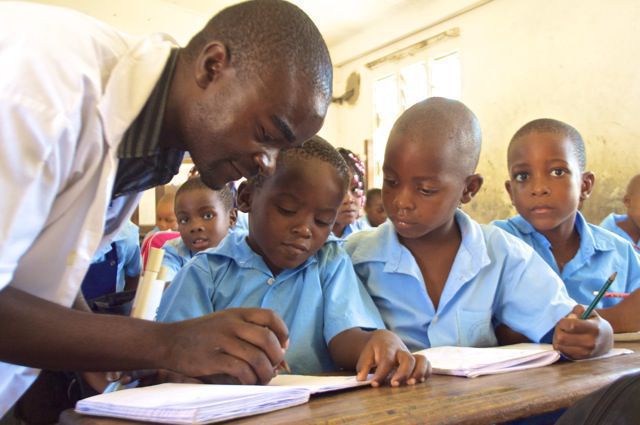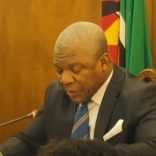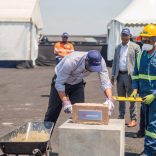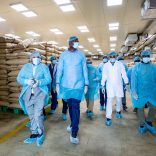Mozambique: Sasol breaks ground on new water supply system in Inhassoro
UN warns Africa faces dearth of teachers

ADPP Mozambique / Elina Penttinen (File photo) / Unesco’s Institute for Statistics says sub-Saharan Africa will need 17-million primary and secondary school teachers by 2030.
Sub-Saharan Africa, a region with the fastest-growing school-age population, will need 17-million primary and secondary school teachers by 2030.
This is according to Unesco’s Institute for Statistics, which on Wednesday released a report on teacher requirements to mark World Teachers’ Day.
Education is one of the areas that organisations, including the IMF, and rating agencies say SA needs to reform to boost the chances of the unemployed finding jobs.
There is also a pressing need for well-trained, well-qualified and properly paid teachers, according to the institute. It found that in 31 of the 96 countries with available data, less than 80% of primary school teachers were trained according to national standards in 2014.
South African teacher unions shared the institute’s sentiments, particularly over the need for more teachers and training.
“With the changes in the curriculum, we feel the training teachers are receiving is not enough. Teachers are being offered one- or two-week courses and those are not enough,” said South African Democratic Teachers Union (Sadtu) spokeswoman Nomusa Cembi.
When teacher-training colleges were closed, Sadtu strongly opposed the move, and although they have welcomed education degrees being offered at universities, they say these are too theoretical.
Teacher training was not keeping up with the changes in the education system, National Professional Teachers’ Organisation of SA executive director Basil Manuel said. “The quality and consistency of teacher training has to be improved. The education department is not spending sufficient money on skilling and reskilling teachers. We have to retrain people at least once a year,” Manuel said.
Globally, countries must recruit almost 69-million teachers in the next 14 years to provide every child with primary and secondary education, according to the report. Of the 69-million, 24.4-million will be primary school teachers and 44.4-million secondary school teachers.
The 69-million is the number of teachers that will need to be recruited to achieve Sustainable Development Goal 4, which demands inclusive and equitable quality education for all by 2030.
For sub-Saharan Africa, the 17-million teachers includes 6.3-million teachers for primary schools and 10.8-million for secondary schools.
Sub-Saharan Africa was already struggling to keep up with demand, with more than 70% of the region’s countries facing acute shortages of primary school teachers, rising to 90% for secondary education.
Teachers and students across the region were already struggling with overcrowded classrooms, the institute said. The success of education systems depended on the availability of teachers; on whether teachers had the training, resources and support needed to do their job; and on whether they had a manageable number of children instead of 60, 70 or even more pupils in a class, Unesco Institute of Statistics director Silvia Montoya said.
Better pay for teachers would attract the best graduates into the profession and give them an incentive to stay, CEO of the Varkey Foundation — which runs the Global Teacher Prize — Vikas Pota said.
Pota acknowledged, however, that “the stretched finances” of some developing countries limited their ability to adequately compensate teachers, and urged for the international community to help with funding.












Leave a Reply
Be the First to Comment!
You must be logged in to post a comment.
You must be logged in to post a comment.